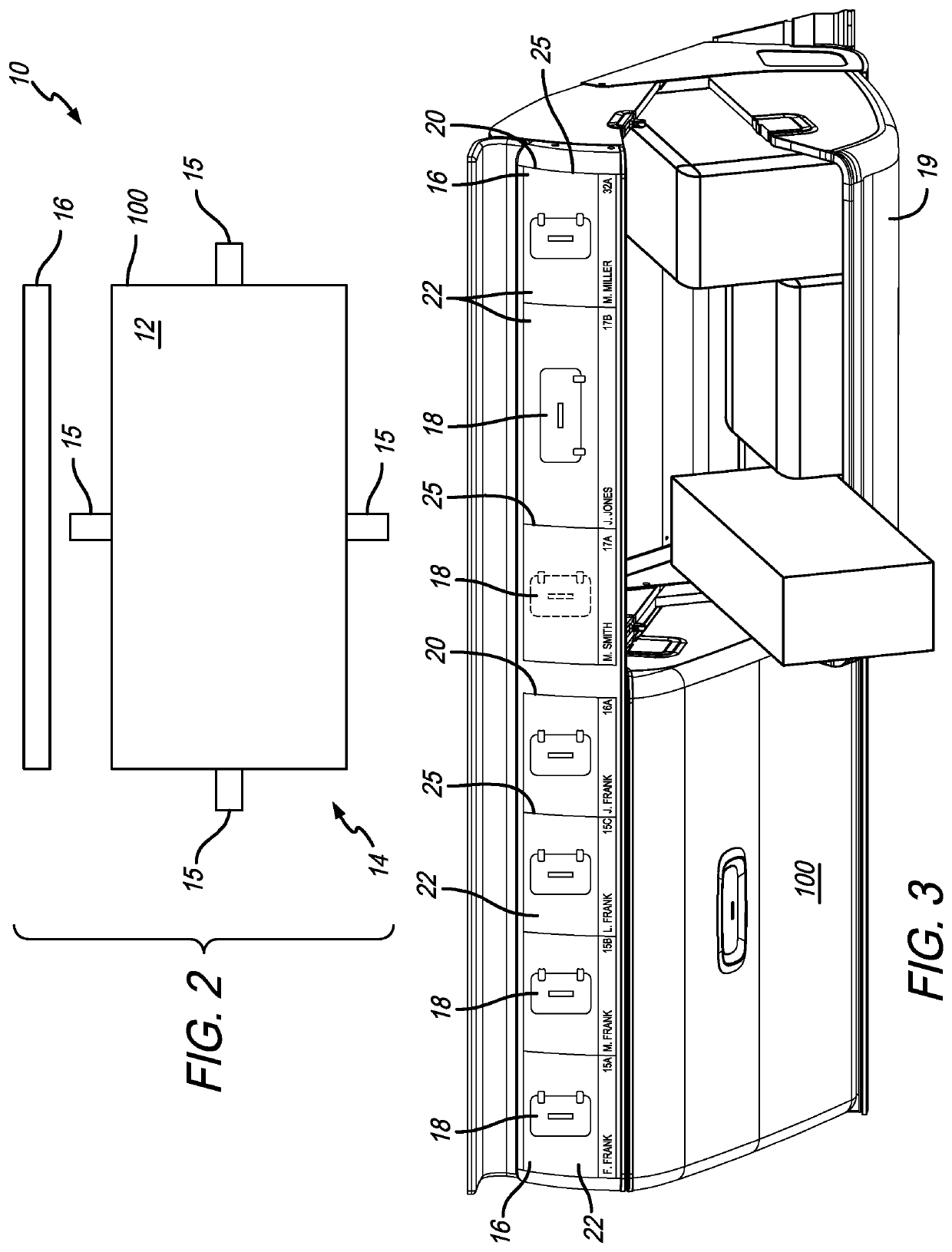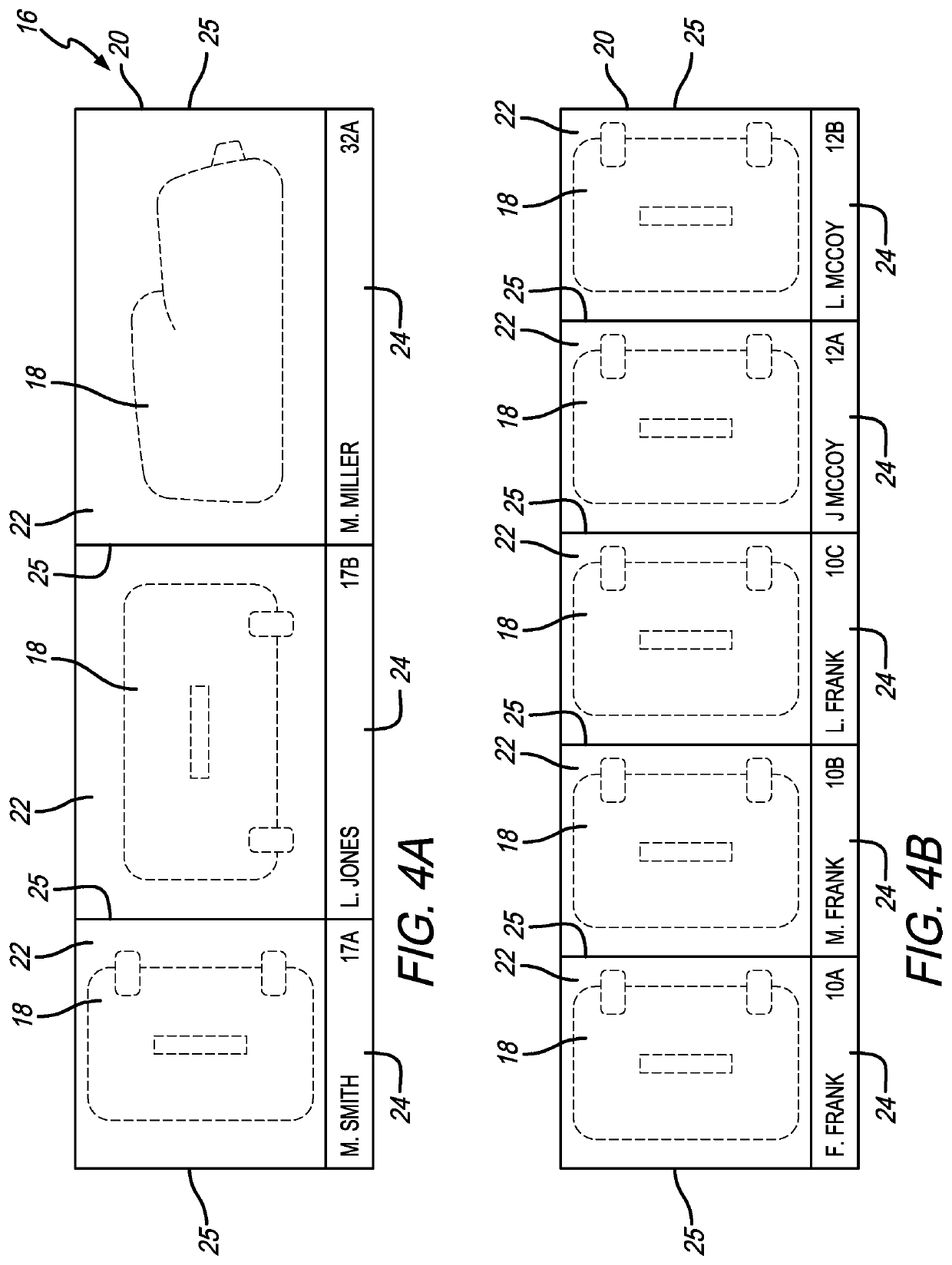Baggage management and reservation system
a baggage management and reservation system technology, applied in the field of baggage management system, can solve the problems of passenger and crew frustration, lack of baggage space, etc., and achieve the effect of collecting revenu
- Summary
- Abstract
- Description
- Claims
- Application Information
AI Technical Summary
Benefits of technology
Problems solved by technology
Method used
Image
Examples
Embodiment Construction
[0004]In accordance with a first aspect of the present invention there is provided a system for reserving space in aircraft overhead storage bins. The system includes an aircraft and a reservation system. The aircraft includes at least a first storage bin that defines a first bin interior that is divided into at least first and second baggage sections. The aircraft is associated with a flight date and a flight time. A first passenger can utilize the reservation system to make a first reservation to reserve at least one of the first and second baggage sections prior to the flight date and the flight time. The system preferably includes a baggage monitoring system associated with the first storage bin that is configured to monitor the positioning of baggage within the first and second baggage sections. In a preferred embodiment, the system also includes a display member associated with the first storage bin that is configured to provide baggage positioning information related to the f...
PUM
 Login to View More
Login to View More Abstract
Description
Claims
Application Information
 Login to View More
Login to View More - R&D
- Intellectual Property
- Life Sciences
- Materials
- Tech Scout
- Unparalleled Data Quality
- Higher Quality Content
- 60% Fewer Hallucinations
Browse by: Latest US Patents, China's latest patents, Technical Efficacy Thesaurus, Application Domain, Technology Topic, Popular Technical Reports.
© 2025 PatSnap. All rights reserved.Legal|Privacy policy|Modern Slavery Act Transparency Statement|Sitemap|About US| Contact US: help@patsnap.com



